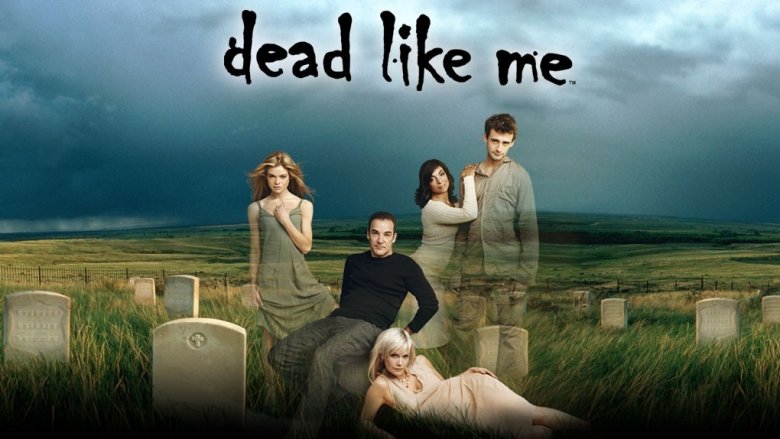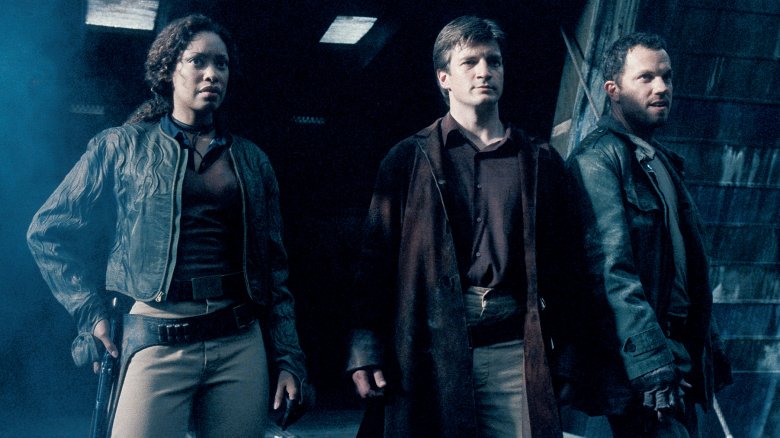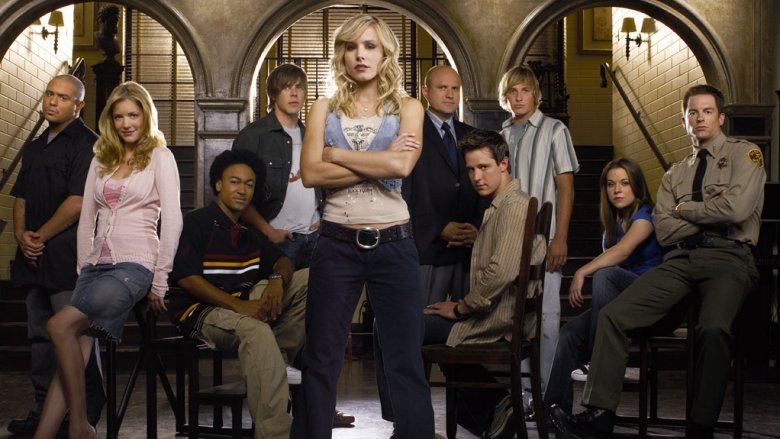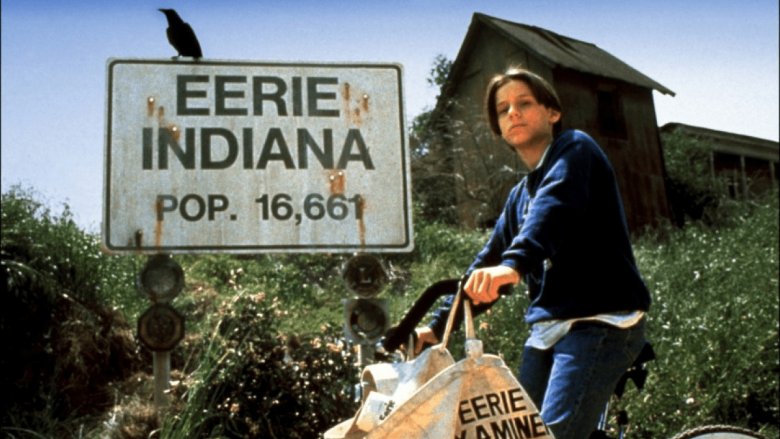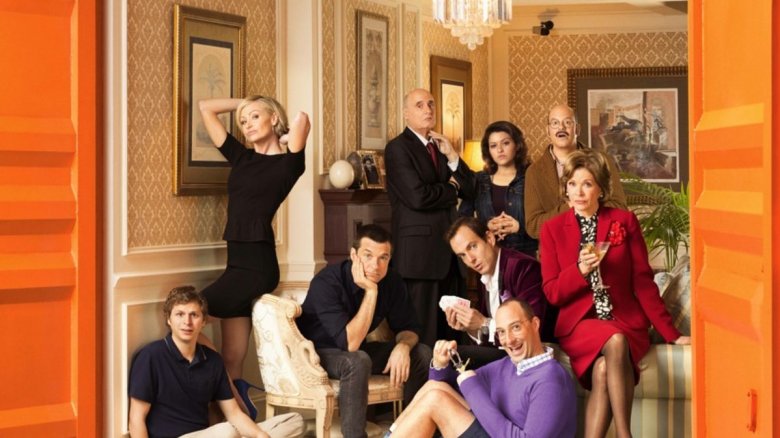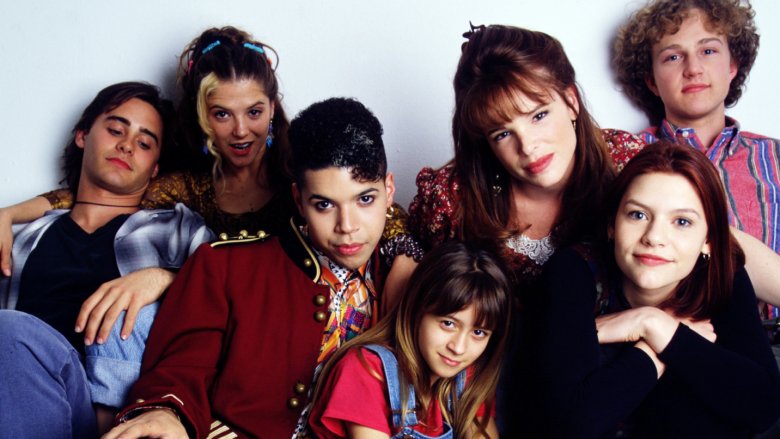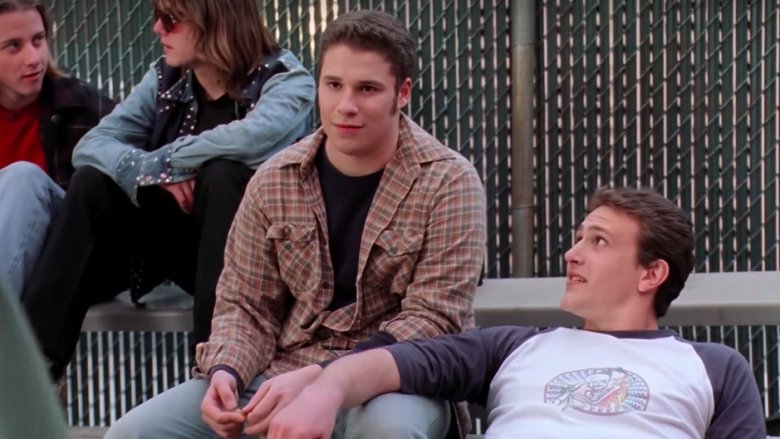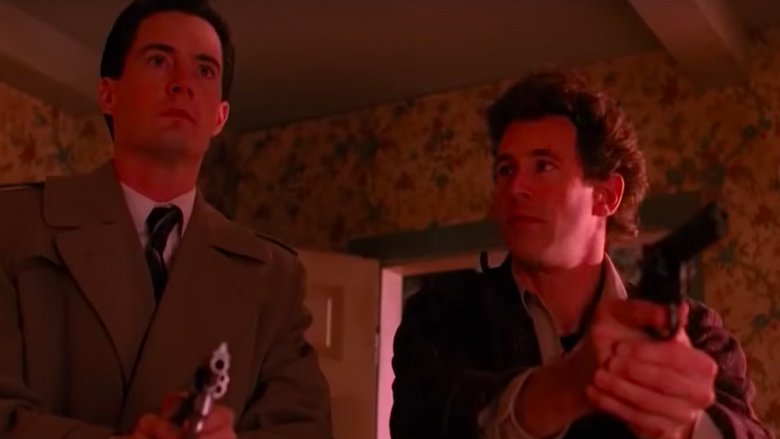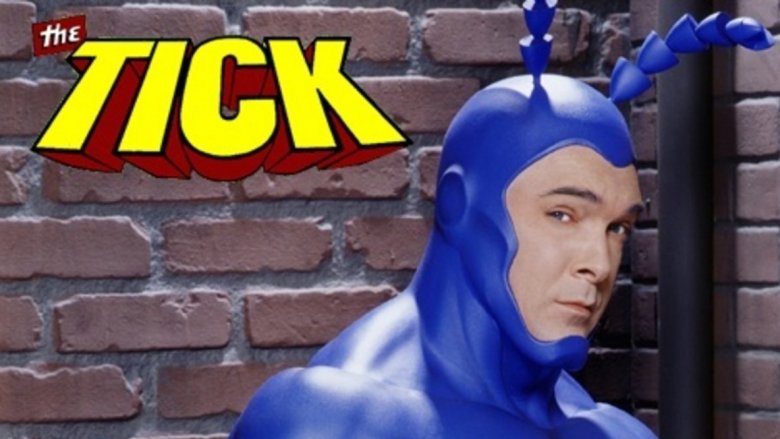Cult TV Shows That Only Gained A Following After Ending
There's lots to dislike about a digital world, like kids and teenaged Groots who almost never look up from their devices, and driverless cars that run over people, because let's face it we all knew that's exactly what they were going to do. But one of the best things about all the connectivity is that we can stream TV shows from pretty much any era, which means that any show that's ever been on the air has the potential to become a cult classic, provided it has the right stuff.
What's really impressive about the shows here, though, is that they got their cult TV status not only after they were technically dead, but sometimes even before streaming was actually a thing, yes, before anyone had ever heard the expression "binge-watching" or ever dreamed that it was possible to watch 67 episodes of Game of Thrones in less than three days with nothing but popcorn and Red Bull for sustenance. And that's really the best proof we have that these cult TV shows were (and still are) really something special.
Immortal Like Me
Let's begin our tale of series death with a show that was actually about death. Dead Like Me premiered on Showtime in 2003, and the plot was basically this: Girl gets killed by airborne toilet seat. Girl becomes grim reaper. Girl for some reason has to also get a regular job, while working reaper jobs on the side.
The show had a really unique premise and was well received by those who actually knew about it, but production was fraught with conflict that ultimately led to series creator Bryan Fuller's departure after just five episodes. According to MediaVillage.com, Fuller felt he was being strong-armed by MGM-TV, which was at creative odds with his ideas and wanted to take the show in a direction Fuller had never intended. Showtime ultimately canceled the series because they felt like the upset was impacting the quality of the show and because of "a sense that the problems would continue."
But Dead like Me just would not die (sorry) and a lot of fans discovered it post-mortem, which does seem a little poetic when you consider the whole series was basically about finding yourself after you're already dead. Now it's achieved the immortality of being a cult classic and a streaming favorite, and there was even a direct-to-DVD movie that was released a few years after the series ended (which you might actually want to skip if reviews are anything to go by).
Send postcards!
It's common knowledge that Fox bungled Joss Whedon's space-western Firefly. It aired the episodes out of order and it advertised the show as "wacky genre comedy" when it was nothing of the sort, thus virtually guaranteeing that it would mostly attract viewers who wouldn't like what they saw.
After it was canceled just one season in, Firefly's hardcore fans organized. According to SyFy, they even named their movement The Browncoats, and like so many other coated heroes of resistance movements, they were prepared to fight and die for their cause. Well, maybe not die exactly, but definitely write a lot of postcards.
A postcard campaign, a lot of online noise, and a full-page ad in Variety didn't exactly bring the show back for a second season, but did get the first season onto DVD and lit the way for the 2005 feature film. And all that attention did something else, too — it alerted people who weren't interested in "wacky genre comedy" that they were missing out on something. Firefly's fanbase started to grow exponentially, until 2011 when Firefly star Nathan Fillion offhandedly mentioned that he'd buy the rights to the series if he won the lottery, and then a few hundred thousand fans collected a million dollars' worth of pledges in hopes that he'd do it for real. He would not, and the campaign never actually went anywhere. But still, the power of a connected fan base is kind of a terrifying thing.
Send peanuts!
Fans of Jericho — a show about life in a fictional town in Kansas after nukes have taken out a handful of major U.S. cities — took a page from the Browncoat notebook to convince CBS to please not cancel their favorite show, but instead of postcards they sent peanuts. Forty thousand pounds of peanuts. Which is adorable until you stop to think that the prevalence of peanut allergy in the general population is something like 5 percent, which means they could have killed off some poor intern at CBS opening up network mail, but okay. Nothing gets someone's attention quite like 18 tons of peanuts.
So why peanuts? Because in the final episode of the first season the lead character utters the word "nuts," so, that's why. Anyway, network executives relented under the weight of all those legumes and ordered a second season. But sadly, Season 2 was all fans got — citing low ratings, the network canceled the show (again) and practically begged fans to please not send any more peanuts.
Jericho was resurrected as a comic book series, which not only gave fans something to do with their Wednesday nights but also attracted new fans, and for a while the show's strong streaming performance led to talk of Netflix bringing the show back. If that ever happens, let's hope they have plenty of room for peanut storage in the event that they one day have to cancel the show (again).
Maybe don't send s'mores
Veronica Mars, a show about a high schooler investigating the murder of her best friend, was loved by critics and a small, rabid fanbase (who call themselves Marshmallows because fans of cult TV shows must all have cute names). Anyway according to the Washington Post, despite the critical praise and the fan rabidity, the show was canceled after just three seasons, and fans were super-pissed. The Marshmallows rallied and begged for a movie, though it looks like they stopped just short of actually sending s'mores to network executives, which would have been considerably messier than peanuts and postcards but far more delicious.
Over the long, seven years it took for anyone to actually take notice, old Marshmallows were joined by new Marshmallows, until Warner Bros. finally told the show's creator it would make a movie if he could raise $2 million on Kickstarter in one month. Never mind that it totally sounds like they only really said that because they wanted all the Marshmallows to shut up — fans took up the challenge and raised $2 million in not one month, but 10 hours. So Warner Bros. really had no choice but to keep its promise, and in 2014 the Veronica Mars movie was finally in theaters. Did it deliver on all its promises? Kinda sorta. Critics were mixed, but fans were mostly satisfied. So yet another cult favorite gets a wrap-up, and it's all thanks to fans making themselves as annoying as possible.
Risen from the Tupperware
Today, supernatural stories rule television, from Stranger Things to, well, Supernatural. Stories of the bizarre, the creepy, and the gross are fan favorites and often achieve cult status. But before there was an X-Files, there was Eerie, Indiana, a show about a boy living in "the center of weirdness for the entire planet." Episode themes included ghosts, mummies, and Tupperware coffins that keep people young forever.
If it sounds a bit out there for the '90s, it was, although it wasn't completely unique since it debuted the year after Twin Peaks. But according to AV Club, Eerie, Indiana had the same problem as Firefly: marketing. The show starred kids, but there wasn't a market for horror in that age group (yet), and the network had no idea how to sell it to viewers. It ended up ranking 74th out of the 78 shows running that season, so the network decided to can it.
But that wasn't the end for Eerie, Indiana. R.L. Stine's series of horror novel for kids launched just one year later, and The Disney Channel felt there was now a market for scary kids shows, so it syndicated the program until 1996. By 1997 the show was enough of a cult TV hit that Fox Kids picked it up and then created a spinoff. The original series is such a cult classic today that if you want to own a DVD set, it will cost you something like $100.
An arrested series
Netflix has toyed with the idea of resurrecting a bunch of programs, from Firefly to Jericho to Twin Peaks (though Showtime beat them to that last one). But Netflix's Chief Content Officer Ted Sarandos told Stuff that Arrested Development was a show that really needed to be brought back because it was "the rarest of birds in that the audience of the show grew larger than the original broadcast audience because people came to discover it years after it was canceled." He then went on to say that Firefly and other cult series' don't have the same sort of fan base, which immediately upset thousands of Firefly fans, not to mention seeming really strange coming from a guy who's made a career out of streaming old shows to new fans.
Anyway, Arrested Development originally ran for three seasons on Fox. The show followed a fictional family called the Bluths, described as "formerly very wealthy" and also, of course, "dysfunctional," because a sitcom about a functional family would be totally boring. Despite much love from critics and many awards, Fox canceled the series after just three seasons, maybe because Fox is really bad at promoting its own shows. AdSavvy blamed it in part on the fact that the Nielsen ratings didn't take DVRs into account, and most of the show's viewers were watching it on DVRs. But Arrested Development fans, unlike fans of some other Fox casualties, at least got to see their show resurrected.
My so-called death
The 1994 series My So-Called Life was the original scorned work of television genius, the show that made fan outrage a thing and forever doomed networks to be smothered by the discontent of people who have nothing good to watch on a Thursday night.
My So-Called Life was about high school drama, which sounds pretty tragically ordinary until you hear from people who actually watched it. Screenrant called it "one of the most beloved TV shows ever—" critics loved it, and so did its small fan base. It helped launch the careers of megastars Claire Danes and Jared Leto, but according to Mel Magazine, it couldn't survive the 8 p.m. Thursday time slot, which pitted it against ratings darlings Friends and Mad About You. Low ratings prompted the network to ax it after only 19 episodes, and then heartbroken fans launched the first-ever internet campaign in the hope of convincing ABC to resurrect their short-lived favorite. The campaign helped get the show into syndication on MTV, which attracted more fans, but it wasn't enough to save the series.
Today, the show is still attracting new fans — more than 3,000 people follow a Twitter account that does nothing but post quotes from My So-Called Life, and the unofficial Facebook page had more than 85,000 followers at time of writing, though the page itself doesn't seem to be very active. That's still pretty impressive for a show that had a so-called death more than two decades ago.
How about another high school drama?
As it turns out, high school drama is both a formula for cult success and a formula for network failure. In 1999, NBC premiered Freaks and Geeks, yet another show that followed struggling high school students trying to cope with bullying, peer pressure, and the agony of being different in a world that demands conformity. Like My So-Called Life, Freaks and Geeks didn't even reach 20 episodes before it was canceled (it only aired 18 episodes), but a lot of cast members went on to become stars, including Seth Rogen and James Franco.
Parade magazine says the notoriety of Freaks and Geeks' stars was at least partly responsible for its "posthumous adoration." People looking back at Seth Rogen's roots are finding a gem hidden down there in the dirt of 1990s television, and they're rewatching it and passing it on to others.
Freaks and Geeks' stars are pretty good at keeping the show that launched their careers in modern consciousness, too. In 2014 Seth Rogen told HuffPost Live he and Paul Rudd had recently confronted the guy who was responsible for canceling the series. "I know his name obviously because we've talked about how stupid he is for the last 15 years. ... I was like, 'This is the guy who canceled Freaks and Geeks! And [Paul Rudd] was like, 'You're the guy! Wow, that's crazy. What's that feel like?" So, cancellation-shaming is actually a thing. And maybe it ought to be.
The root of all television weirdness
Widely proclaimed to be the weirdest thing on TV ever, Twin Peaks paved the way for all weird television that followed, and it wasn't just a paved footpath but an entire super-highway of weird, like German Autobahns weird, with no weirdness speed limit. According to The Atlantic, every show that has ever done anything strange since, from Lost to Game of Thrones, owes a debt of gratitude to David Lynch's television masterpiece — or disaster, depending on how you look at it.
Twin Peaks was popular when it was on television, but its popularity was short-lived. Fans abandoned it in the second season, partly because it reached new peaks of weirdness but also because the writers had a lot of unchecked bad ideas and the whole thing just kind of imploded. After that, fans forgot about it. After all, this was 1991, way before streaming and relatively way before the Internet, so there was no online campaign and no new viewers to accidentally discover it while paging through their Amazon Prime account.
But 20 years later, something weird happened. People started showing up to the annual Twin Peaks festival in Washington state. The show became popular again, at least partly because of its availability on streaming services, and partly because all the shows that followed it had actually made it more palatable to a modern audience. So it's almost like Twin Peaks is its own ancestor, now that it's back on Showtime. How's that for weird?
Because large, blue parasites make obvious superheroes
Here's a superhero for the ages — a dude dressed like a giant blue bug, who first appeared in 1986 as a newsletter mascot for a comic book store in Boston. According to Den of Geek, the unlikely superhero eventually got his own comic book, and then, in 1994, his own Saturday morning cartoon.
The thing about The Tick is he was never really meant to be a Captain America or an Iron Man — viewers weren't supposed to idolize him in the way Marvel and DC wanted fans to idolize their superheroes. He was pure satire. For example, two of his superpowers were "optimism and child-like enthusiasm." Yup.
The cartoon fared poorly, probably because the humor was really not meant for a Saturday morning cartoon viewership. But the show was briefly revived as a live-action series in 2001, which was probably a little too soon for a general audience. Superheroes weren't mainstream yet, after all, it had only been a few years since Michael Keaton famously uttered the words, "I'm Batman." Iron Man was still seven years away. But critics liked The Tick, even though it performed poorly in the ratings and Fox ended it after only nine episodes. Oh, Fox, what are you doing?
Over the next 15 years, the series became a cult TV hit, slowly gaining a following until Amazon finally took notice and decided to revive it in 2017, thus proving that pretty much anyyone is smarter than a Fox executive.

